-

Mar
21
Interpretive Summary: Identification and screening of circular RNAs during adipogenic differentiation of ovine preadipocyte by RNA-seq

The moderate fat deposition contributes to improve mutton quality, which is associated with the differentiation of preadipocytes. To investigate roles of circular RNAs (circRNAs) in preadipocyte differentiation, we identified circRNAs on days 0, 2, and 8 of preadipocytes differentiation and compared the expression profile of circRNAs at different adipogenic differentiation stages.
Read more
-

Mar
21
Interpretive Summary: Technical note: ShinyAnimalCV: open-source cloud-based web application for object detection, segmentation, and three-dimensional visualization of animals using computer vision

The integration of cameras and data science has great potential to revolutionize livestock production systems, making them more efficient and sustainable by replacing human-based management with real-time individualized animal care. However, applying these digital tools to animal data presents challenges that require computer programming and data analysis skills, as well as access to computing resources.
Read more
-

Mar
17
Jim Oltjen's Animal Science Family Tree and Legacy
Jim Oltjen's family history of animal scientists spans three generations, and ASAS has been part of that journey since 1958. They have been mentored by and mentors to those who are now lifelong friends. He and his wife, Sharon, encourage you to reflect on your animal science family tree and ASAS journey and urge you to consider your legacy with ASAS by becoming a 1908 Society Member and ensuring a bright future for aspiring animal scientists.
Read more
-

Mar
14
Interpretive Summary: Green banana flour as a novel functional ingredient in retorted feline diets

Green banana flour (GBF) is a novel ingredient in the pet food industry but has been gaining popularity in human nutrition. Not only can GBF be a source of dietary fiber in pet foods, but the natural brown color and hygroscopic properties also show the potential in contributing to physical characteristics.
Read more
-

Mar
14
Interpretive Summary: Nitrogen and energy utilization and methane emissions of sheep grazing on annual pasture vs. native pasture

The reduction of methane (CH4) emissions and nitrogen (N) excretion from livestock production systems can help mitigate environmental impact and improve feeding efficiency. The energy requirements of livestock are crucial for enhancing their performance and minimizing environmental impact.
Read more
-

Mar
14
Interpretive Summary: Benchmarking the United States bison meat industry: stakeholder perceptions, production parameters, and live animal factors affecting meat quality

This project evaluated bison industry stakeholder perceptions on management, animal welfare, and meat quality with in-person and online surveys. Additionally, multiple live animal factors were measured to benchmark their influence on specific meat quality attributes.
Read more
-

Mar
14
Interpretive Summary: One-carbon metabolite supplementation to nutrient-restricted beef heifers affects placental vascularity during early pregnancy
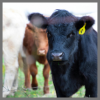
In cow–calf production, periods of poor forage availability or quality can result in nutrient restriction during pregnancy. Previous studies have shown that even moderate maternal feed restriction during pregnancy, including very early in pregnancy, has profound effects on fetal and placental development, potentially having lasting impacts on calf growth and body composition later in life.
Read more
-

Mar
14
Interpretive Summary: Effects of dietary Nisin on growth performance, immune function, and gut health of broilers challenged by Clostridium perfringens
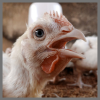
Necrotic enteritis (NE), a severe digestive disorder in broiler chickens caused by Clostridium perfringens (Cp), a gram-positive bacterium, is a widespread issue in the global poultry industry, leading to significant economic losses. Nisin (Ni), a polypeptide bacteriocin produced by probiotic lactic streptococci, has been found to enhance daily weight gain and feed intake, while also exhibiting inhibitory effects on gram-positive bacteria and anti-inflammatory properties.
Read more
-

Mar
07
Interpretive Summary: Stress indicators in dairy cows adapting to virtual fencing

Virtual fences are commercially available but face restrictions in some countries due to animal welfare concerns. For virtual fencing (VF), animals are equipped with collars that emit audio tones (ATs) followed by electric pulses (EPs) when they cross a virtual boundary tracked by global navigation. Existing studies have so far not covered the aspect of longer-term learning, impacting possibly VF suitability.
Read more
-

Mar
07
Interpretive Summary: Exploring definitions of daily enteric methane emission phenotypes for genetic evaluations using a population of indoor-fed multi-breed growing cattle with feed intake data
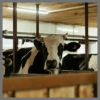
Livestock production is a significant contributor to greenhouse gas emissions. Animal breeding programs have been proposed as a sustainable mitigation strategy to reduce enteric methane emissions in livestock production.
Read more
-

Mar
07
Interpretive Summary: Effects of betaine on growth performance and intestinal health of rabbits fed different digestible energy diets

Insufficient dietary energy can cause many negative effects on animal production and cause intestinal diseases, which are one of the main causes of morbidity and mortality in rabbits. Results of some experiments demonstrated that betaine has various physiological functions such as improving energy utilization and intestinal health.
Read more
-

Mar
07
Interpretive Summary: Effect of water sulfate and dietary bismuth subsalicylate on feed and water intake, ruminal hydrogen sulfide concentration, and trace-mineral status of growing beef heifers
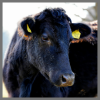
Water containing a high concentration of sulfate increases the risk of hydrogen sulfide production in the rumen and consequently of polioencephalomalacia. In addition, water with a high-sulfate concentration may induce copper deficiency indicated by depleted liver copper concentration.
Read more
-

Mar
07
Interpretive Summary: Late gestational nutrient restriction in primiparous beef females: Performance and metabolic status of lactating dams and pre-weaning calves
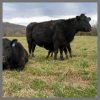
Nutrient requirements increase substantially during late gestation in the beef female; however, poor forage nutrient availability can result in undernutrition. For heifers, the added nutrient requirements needed to continue growing during their first pregnancy and lactation pose an even greater challenge.
Read more
-

Feb
29
Interpretive Summary: 2024 Farm Sector Income Forecast is published

The United States Department of Agriculture’s (USDA) Economic Research Service (ERS) has published the 2024 Farm Sector Income Forecast report. This annual report measures, forecasts, and explains indicators of economic performance for the U.S. farm sector and farm businesses by resource region and commodity specialization.
Read more
-

Feb
29
Interpretive Summary: Ag Groups suing California over Clean Air Act

The United States Chamber of Commerce, American Farm Bureau Federation (AFBF), Western Growers Association, California Chamber of Commerce, Central Valley Business Federation, and Los Angeles County Business Federation have recently filed a lawsuit in the United States District Court for the Central District of California against the state of California regarding the corporate disclosure laws that were signed into law by California Governor Gavin Newsom in October 2023.
Read more
-

Feb
29
Interpretive Summary: FAIR Labels Act is introduced

A new bipartisan bill was introduced to increase transparency and clarify labeling requirements for plant-based and cell-cultured alternative meat products. Several meat industry groups have come out in support of the act.
Read more
-

Feb
29
Interpretive Summary: Judge rules in favor of pork producers in Question 3
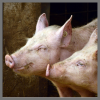
A group of pork producers have filed a lawsuit in Massachusetts against the Act to Prevent Cruelty to Farm Animals (Question 3). Passed by voters in November 2016, Question 3 imposes confinement requirements on out-of-state pork producers and prohibits the sale of pork meat within the state from offspring of an animal confined in a manner inconsistent with Massachusetts' requirements, regardless of where in the nation the animal was raised.
Read more
-

Feb
29
Interpretive Summary: USDA funds programs to increase food supply chain resiliency

The United States Department of Agriculture (USDA) has granted over $270 of funding in partnership with state departments of agriculture, to build resilience across the middle of the food supply chain and strengthen local and regional food systems.
Read more
-

Feb
29
Interpretive Summary: USDA holds 100th Annual Agriculture Forum

Earlier this month, the United States Department of Agriculture (USDA) held the 100th Annual Agriculture Forum. The forum is the largest held by the USDA, with over 1,700 in-person attendees and thousands more virtual attendees, comprising farmers and ranchers, food and ag industry representatives, policymakers, government officials, and non-governmental organizations.
Read more
-

Feb
22
Interpretive Summary: Genetic evaluation of crossbred Bos indicus cow temperament at parturition

Cow temperament was evaluated in 1/2 Nellore 1/2 Angus cows from four distinct generations (five herds) from 2005 to 2022. Cows were scored when their calves were processed (1 d age)...
Read more
 MarInterpretive Summary: Identification and screening of circular RNAs during adipogenic differentiation of ovine preadipocyte by RNA-seq
MarInterpretive Summary: Identification and screening of circular RNAs during adipogenic differentiation of ovine preadipocyte by RNA-seq The moderate fat deposition contributes to improve mutton quality, which is associated with the differentiation of preadipocytes. To investigate roles of circular RNAs (circRNAs) in preadipocyte differentiation, we identified circRNAs on days 0, 2, and 8 of preadipocytes differentiation and compared the expression profile of circRNAs at different adipogenic differentiation stages.
The moderate fat deposition contributes to improve mutton quality, which is associated with the differentiation of preadipocytes. To investigate roles of circular RNAs (circRNAs) in preadipocyte differentiation, we identified circRNAs on days 0, 2, and 8 of preadipocytes differentiation and compared the expression profile of circRNAs at different adipogenic differentiation stages. MarInterpretive Summary: Technical note: ShinyAnimalCV: open-source cloud-based web application for object detection, segmentation, and three-dimensional visualization of animals using computer vision
MarInterpretive Summary: Technical note: ShinyAnimalCV: open-source cloud-based web application for object detection, segmentation, and three-dimensional visualization of animals using computer vision The integration of cameras and data science has great potential to revolutionize livestock production systems, making them more efficient and sustainable by replacing human-based management with real-time individualized animal care. However, applying these digital tools to animal data presents challenges that require computer programming and data analysis skills, as well as access to computing resources.
The integration of cameras and data science has great potential to revolutionize livestock production systems, making them more efficient and sustainable by replacing human-based management with real-time individualized animal care. However, applying these digital tools to animal data presents challenges that require computer programming and data analysis skills, as well as access to computing resources. MarJim Oltjen's Animal Science Family Tree and Legacy
MarJim Oltjen's Animal Science Family Tree and Legacy MarInterpretive Summary: Green banana flour as a novel functional ingredient in retorted feline diets
MarInterpretive Summary: Green banana flour as a novel functional ingredient in retorted feline diets Green banana flour (GBF) is a novel ingredient in the pet food industry but has been gaining popularity in human nutrition. Not only can GBF be a source of dietary fiber in pet foods, but the natural brown color and hygroscopic properties also show the potential in contributing to physical characteristics.
Green banana flour (GBF) is a novel ingredient in the pet food industry but has been gaining popularity in human nutrition. Not only can GBF be a source of dietary fiber in pet foods, but the natural brown color and hygroscopic properties also show the potential in contributing to physical characteristics. MarInterpretive Summary: Nitrogen and energy utilization and methane emissions of sheep grazing on annual pasture vs. native pasture
MarInterpretive Summary: Nitrogen and energy utilization and methane emissions of sheep grazing on annual pasture vs. native pasture The reduction of methane (CH4) emissions and nitrogen (N) excretion from livestock production systems can help mitigate environmental impact and improve feeding efficiency. The energy requirements of livestock are crucial for enhancing their performance and minimizing environmental impact.
The reduction of methane (CH4) emissions and nitrogen (N) excretion from livestock production systems can help mitigate environmental impact and improve feeding efficiency. The energy requirements of livestock are crucial for enhancing their performance and minimizing environmental impact. MarInterpretive Summary: Benchmarking the United States bison meat industry: stakeholder perceptions, production parameters, and live animal factors affecting meat quality
MarInterpretive Summary: Benchmarking the United States bison meat industry: stakeholder perceptions, production parameters, and live animal factors affecting meat quality This project evaluated bison industry stakeholder perceptions on management, animal welfare, and meat quality with in-person and online surveys. Additionally, multiple live animal factors were measured to benchmark their influence on specific meat quality attributes.
This project evaluated bison industry stakeholder perceptions on management, animal welfare, and meat quality with in-person and online surveys. Additionally, multiple live animal factors were measured to benchmark their influence on specific meat quality attributes. MarInterpretive Summary: One-carbon metabolite supplementation to nutrient-restricted beef heifers affects placental vascularity during early pregnancy
MarInterpretive Summary: One-carbon metabolite supplementation to nutrient-restricted beef heifers affects placental vascularity during early pregnancy In cow–calf production, periods of poor forage availability or quality can result in nutrient restriction during pregnancy. Previous studies have shown that even moderate maternal feed restriction during pregnancy, including very early in pregnancy, has profound effects on fetal and placental development, potentially having lasting impacts on calf growth and body composition later in life.
In cow–calf production, periods of poor forage availability or quality can result in nutrient restriction during pregnancy. Previous studies have shown that even moderate maternal feed restriction during pregnancy, including very early in pregnancy, has profound effects on fetal and placental development, potentially having lasting impacts on calf growth and body composition later in life. MarInterpretive Summary: Effects of dietary Nisin on growth performance, immune function, and gut health of broilers challenged by Clostridium perfringens
MarInterpretive Summary: Effects of dietary Nisin on growth performance, immune function, and gut health of broilers challenged by Clostridium perfringens Necrotic enteritis (NE), a severe digestive disorder in broiler chickens caused by Clostridium perfringens (Cp), a gram-positive bacterium, is a widespread issue in the global poultry industry, leading to significant economic losses. Nisin (Ni), a polypeptide bacteriocin produced by probiotic lactic streptococci, has been found to enhance daily weight gain and feed intake, while also exhibiting inhibitory effects on gram-positive bacteria and anti-inflammatory properties.
Necrotic enteritis (NE), a severe digestive disorder in broiler chickens caused by Clostridium perfringens (Cp), a gram-positive bacterium, is a widespread issue in the global poultry industry, leading to significant economic losses. Nisin (Ni), a polypeptide bacteriocin produced by probiotic lactic streptococci, has been found to enhance daily weight gain and feed intake, while also exhibiting inhibitory effects on gram-positive bacteria and anti-inflammatory properties. MarInterpretive Summary: Stress indicators in dairy cows adapting to virtual fencing
MarInterpretive Summary: Stress indicators in dairy cows adapting to virtual fencing Virtual fences are commercially available but face restrictions in some countries due to animal welfare concerns. For virtual fencing (VF), animals are equipped with collars that emit audio tones (ATs) followed by electric pulses (EPs) when they cross a virtual boundary tracked by global navigation. Existing studies have so far not covered the aspect of longer-term learning, impacting possibly VF suitability.
Virtual fences are commercially available but face restrictions in some countries due to animal welfare concerns. For virtual fencing (VF), animals are equipped with collars that emit audio tones (ATs) followed by electric pulses (EPs) when they cross a virtual boundary tracked by global navigation. Existing studies have so far not covered the aspect of longer-term learning, impacting possibly VF suitability. MarInterpretive Summary: Exploring definitions of daily enteric methane emission phenotypes for genetic evaluations using a population of indoor-fed multi-breed growing cattle with feed intake data
MarInterpretive Summary: Exploring definitions of daily enteric methane emission phenotypes for genetic evaluations using a population of indoor-fed multi-breed growing cattle with feed intake data Livestock production is a significant contributor to greenhouse gas emissions. Animal breeding programs have been proposed as a sustainable mitigation strategy to reduce enteric methane emissions in livestock production.
Livestock production is a significant contributor to greenhouse gas emissions. Animal breeding programs have been proposed as a sustainable mitigation strategy to reduce enteric methane emissions in livestock production. MarInterpretive Summary: Effects of betaine on growth performance and intestinal health of rabbits fed different digestible energy diets
MarInterpretive Summary: Effects of betaine on growth performance and intestinal health of rabbits fed different digestible energy diets Insufficient dietary energy can cause many negative effects on animal production and cause intestinal diseases, which are one of the main causes of morbidity and mortality in rabbits. Results of some experiments demonstrated that betaine has various physiological functions such as improving energy utilization and intestinal health.
Insufficient dietary energy can cause many negative effects on animal production and cause intestinal diseases, which are one of the main causes of morbidity and mortality in rabbits. Results of some experiments demonstrated that betaine has various physiological functions such as improving energy utilization and intestinal health. MarInterpretive Summary: Effect of water sulfate and dietary bismuth subsalicylate on feed and water intake, ruminal hydrogen sulfide concentration, and trace-mineral status of growing beef heifers
MarInterpretive Summary: Effect of water sulfate and dietary bismuth subsalicylate on feed and water intake, ruminal hydrogen sulfide concentration, and trace-mineral status of growing beef heifers Water containing a high concentration of sulfate increases the risk of hydrogen sulfide production in the rumen and consequently of polioencephalomalacia. In addition, water with a high-sulfate concentration may induce copper deficiency indicated by depleted liver copper concentration.
Water containing a high concentration of sulfate increases the risk of hydrogen sulfide production in the rumen and consequently of polioencephalomalacia. In addition, water with a high-sulfate concentration may induce copper deficiency indicated by depleted liver copper concentration. MarInterpretive Summary: Late gestational nutrient restriction in primiparous beef females: Performance and metabolic status of lactating dams and pre-weaning calves
MarInterpretive Summary: Late gestational nutrient restriction in primiparous beef females: Performance and metabolic status of lactating dams and pre-weaning calves Nutrient requirements increase substantially during late gestation in the beef female; however, poor forage nutrient availability can result in undernutrition. For heifers, the added nutrient requirements needed to continue growing during their first pregnancy and lactation pose an even greater challenge.
Nutrient requirements increase substantially during late gestation in the beef female; however, poor forage nutrient availability can result in undernutrition. For heifers, the added nutrient requirements needed to continue growing during their first pregnancy and lactation pose an even greater challenge. FebInterpretive Summary: 2024 Farm Sector Income Forecast is published
FebInterpretive Summary: 2024 Farm Sector Income Forecast is published The United States Department of Agriculture’s (USDA) Economic Research Service (ERS) has published the 2024 Farm Sector Income Forecast report. This annual report measures, forecasts, and explains indicators of economic performance for the U.S. farm sector and farm businesses by resource region and commodity specialization.
The United States Department of Agriculture’s (USDA) Economic Research Service (ERS) has published the 2024 Farm Sector Income Forecast report. This annual report measures, forecasts, and explains indicators of economic performance for the U.S. farm sector and farm businesses by resource region and commodity specialization. FebInterpretive Summary: Ag Groups suing California over Clean Air Act
FebInterpretive Summary: Ag Groups suing California over Clean Air Act The United States Chamber of Commerce, American Farm Bureau Federation (AFBF), Western Growers Association, California Chamber of Commerce, Central Valley Business Federation, and Los Angeles County Business Federation have recently filed a lawsuit in the United States District Court for the Central District of California against the state of California regarding the corporate disclosure laws that were signed into law by California Governor Gavin Newsom in October 2023.
The United States Chamber of Commerce, American Farm Bureau Federation (AFBF), Western Growers Association, California Chamber of Commerce, Central Valley Business Federation, and Los Angeles County Business Federation have recently filed a lawsuit in the United States District Court for the Central District of California against the state of California regarding the corporate disclosure laws that were signed into law by California Governor Gavin Newsom in October 2023. FebInterpretive Summary: FAIR Labels Act is introduced
FebInterpretive Summary: FAIR Labels Act is introduced A new bipartisan bill was introduced to increase transparency and clarify labeling requirements for plant-based and cell-cultured alternative meat products. Several meat industry groups have come out in support of the act.
A new bipartisan bill was introduced to increase transparency and clarify labeling requirements for plant-based and cell-cultured alternative meat products. Several meat industry groups have come out in support of the act. FebInterpretive Summary: Judge rules in favor of pork producers in Question 3
FebInterpretive Summary: Judge rules in favor of pork producers in Question 3 A group of pork producers have filed a lawsuit in Massachusetts against the Act to Prevent Cruelty to Farm Animals (Question 3). Passed by voters in November 2016, Question 3 imposes confinement requirements on out-of-state pork producers and prohibits the sale of pork meat within the state from offspring of an animal confined in a manner inconsistent with Massachusetts' requirements, regardless of where in the nation the animal was raised.
A group of pork producers have filed a lawsuit in Massachusetts against the Act to Prevent Cruelty to Farm Animals (Question 3). Passed by voters in November 2016, Question 3 imposes confinement requirements on out-of-state pork producers and prohibits the sale of pork meat within the state from offspring of an animal confined in a manner inconsistent with Massachusetts' requirements, regardless of where in the nation the animal was raised. FebInterpretive Summary: USDA funds programs to increase food supply chain resiliency
FebInterpretive Summary: USDA funds programs to increase food supply chain resiliency The United States Department of Agriculture (USDA) has granted over $270 of funding in partnership with state departments of agriculture, to build resilience across the middle of the food supply chain and strengthen local and regional food systems.
The United States Department of Agriculture (USDA) has granted over $270 of funding in partnership with state departments of agriculture, to build resilience across the middle of the food supply chain and strengthen local and regional food systems. FebInterpretive Summary: USDA holds 100th Annual Agriculture Forum
FebInterpretive Summary: USDA holds 100th Annual Agriculture Forum Earlier this month, the United States Department of Agriculture (USDA) held the 100th Annual Agriculture Forum. The forum is the largest held by the USDA, with over 1,700 in-person attendees and thousands more virtual attendees, comprising farmers and ranchers, food and ag industry representatives, policymakers, government officials, and non-governmental organizations.
Earlier this month, the United States Department of Agriculture (USDA) held the 100th Annual Agriculture Forum. The forum is the largest held by the USDA, with over 1,700 in-person attendees and thousands more virtual attendees, comprising farmers and ranchers, food and ag industry representatives, policymakers, government officials, and non-governmental organizations. FebInterpretive Summary: Genetic evaluation of crossbred Bos indicus cow temperament at parturition
FebInterpretive Summary: Genetic evaluation of crossbred Bos indicus cow temperament at parturition Cow temperament was evaluated in 1/2 Nellore 1/2 Angus cows from four distinct generations (five herds) from 2005 to 2022. Cows were scored when their calves were processed (1 d age)...
Cow temperament was evaluated in 1/2 Nellore 1/2 Angus cows from four distinct generations (five herds) from 2005 to 2022. Cows were scored when their calves were processed (1 d age)...



